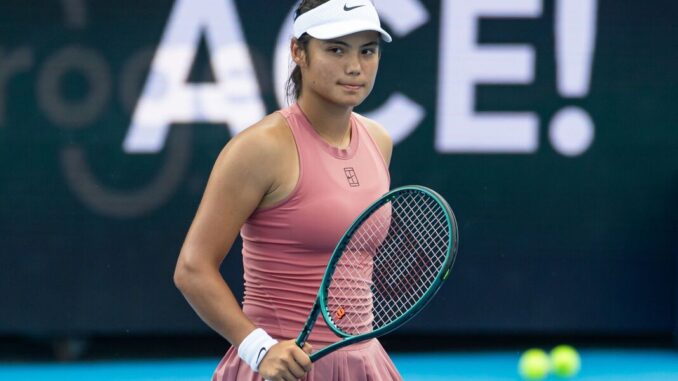
Emma Raducanu’s tennis career has been a thrilling saga of soaring highs and challenging lows, with her improbable 2021 US Open victory as an 18-year-old qualifier etched as a defining moment in the sport. Yet, the 2025 US Open brought a sobering wake-up call for the British star. In a lopsided second-round match, she was overpowered 6-1, 6-2 by Elena Rybakina, a defeat that abruptly halted her campaign and left fans and pundits dissecting her trajectory. Despite a strong North American hard-court season, marked by notable wins and competitive showings, the loss underscored the razor-thin margins at tennis’ highest level, reigniting discussions about how Raducanu can reclaim her place among the elite.
Currently ranked No. 34 and Britain’s top female player, Raducanu is at a crossroads. Guidance from her former coach Mark Petchey, who worked with her briefly in 2020 and returned earlier this year before stepping back due to broadcasting obligations, has offered a clear path forward. His exit opened the door for Francisco Roig, the experienced Spanish coach who helped shape Rafael Nadal’s early career, to step in. Raducanu and Roig quickly decamped to Barcelona for a rigorous training stint, aiming to sharpen her game ahead of her next tournaments.
Petchey, with his deep understanding of Raducanu’s strengths and struggles, outlined three critical objectives to steer her toward Grand Slam contention. These aren’t mere adjustments but strategic cornerstones to rebuild her momentum. His top priority is for her to break into the top 32 to secure a seeding at majors. “If I was Emma, I’d have like three targets. Number one would be to get inside the top 32,” Petchey said, emphasizing that a seeding would protect her from early matchups with top seeds. “I don’t think that you need to be anything more than that. I think it needs to be inside 32 to be seeded for the Australian Open at the back end of the Asian swing. That would be the goal,” he added. Aiming for a ranking around No. 25 would be ideal, ensuring she avoids the top four seeds until at least the fourth round. “So, whether that’s 25 or comfortably inside, don’t have to stress, know you’re going to be seeded,” he noted. With the Asian swing kicking off, including a wildcard entry into the WTA 500 in Seoul, Raducanu has a golden opportunity to amass ranking points and edge closer to this target.
The second goal focuses on elevating the consistency and aggression of her game. While her summer showcased moments of brilliance, the Rybakina rout exposed her struggle to sustain pressure against top-tier opponents. Petchey called for a style that’s “more impactful, more often,” urging her to refine her powerful baseline game and enhance her movement on hard courts. The aim is to transform sporadic flashes of dominance into a dependable weapon, enabling her to dictate points against players of Rybakina’s caliber and compete consistently at the tour’s highest echelons.
Petchey’s third target zeroes in on her serve, a shot with potential yet to be fully realized. “And number three, to keep working on that serve; to keep making sure she’s getting the maximum out of it,” he said. Recognizing her height as a limiting factor, he remained realistic: “Everyone wants to talk about the fact that it can be better but there will be a limit on it just because of how tall she is. All she can do is keep working on it and make it the best that it can become subject to the natural restrictions of physics and geometry.” Recent improvements, including more first-serve winners and fewer double faults, are encouraging, but consistency is critical. A stronger serve could unlock free points and set up her lethal forehand, amplifying her overall threat.
Raducanu is tackling these goals with resolve, openly targeting a seeding for the Australian Open in January 2026, where the fast courts suit her attacking style. The Asian swing, starting in Seoul, offers a packed schedule to accumulate points and hone her game under Roig’s mentorship. Roig’s experience with Nadal’s relentless drive could instill a similar tenacity in Raducanu, helping her move past the injuries and inconsistencies that have plagued her since her 2021 breakthrough.
The US Open loss, though painful, is familiar terrain for a player who has navigated surgeries and form dips. Petchey’s roadmap blends pragmatism with ambition, giving Raducanu a clear focus. As she steps onto the court in Seoul, she carries both the weight of expectation and a renewed sense of purpose. Mastering these objectives—climbing the rankings, sharpening her game’s impact, and perfecting her serve—could herald a defining 2026 season. With Roig’s guidance and Petchey’s insights as her compass, Raducanu is poised to rewrite her story, proving that her 2021 fairy tale was just the beginning.
Leave a Reply